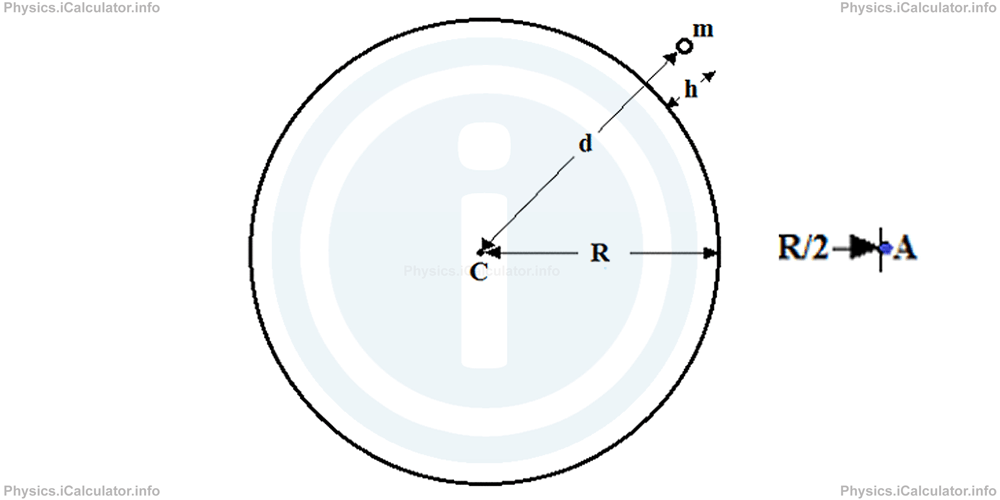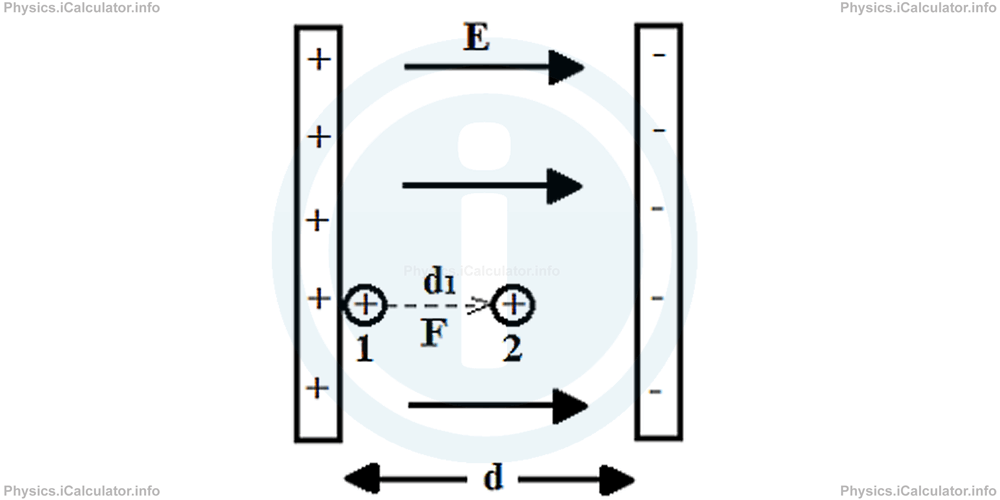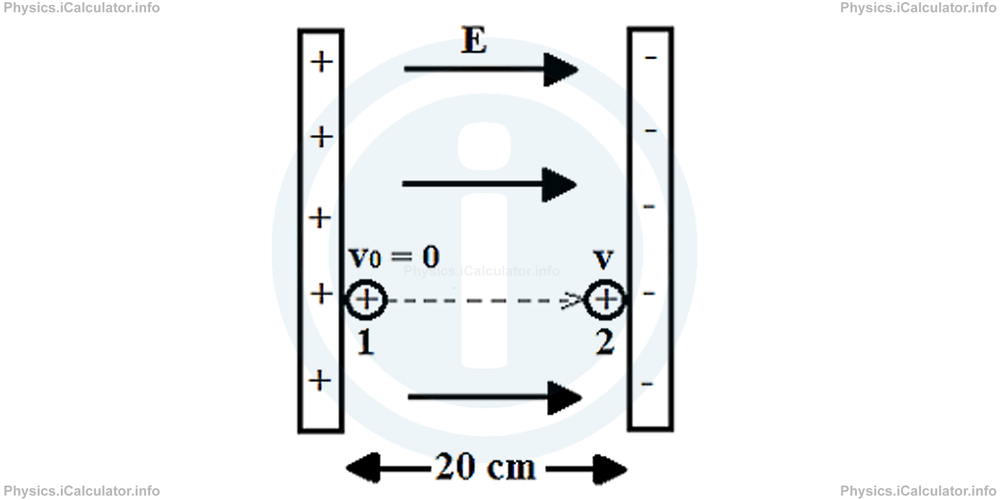Menu
Physics Lesson 14.4.1 - Electric Potential Energy
Please provide a rating, it takes seconds and helps us to keep this resource free for all to use
Welcome to our Physics lesson on Electric Potential Energy, this is the first lesson of our suite of physics lessons covering the topic of Electric Potential Energy, you can find links to the other lessons within this tutorial and access additional physics learning resources below this lesson.
Electric Potential Energy
In the previous tutorial, we have pointed out many similarities between gravitational and electrical nature of matter. A number of electrical concepts such as electric charge, electrostatic force, electric field etc., were explained using the analogy with the corresponding concepts discussed when dealing with gravity. We have seen that even the formulae are similar; this was very helpful in understanding the type of variation between quantities involved in electrostatics.
We can extend further this approach even for other electric-related quantities. One of them is electric potential energy. For a better understanding, we will explain this concept recalling the analogue concept of gravitational potential energy.
As you remember from Mechanics, when an object is raised at a certain height from the ground, there is some work done against gravity, which increases the object's energy. This energy is stored in the form of gravitational potential energy, which is an energy related to the distance between the Earth and the object itself. We have used the formula GPE = m × g × h to find the gravitational potential energy of objects near the Earth surface, where m is the mass of object, g is the gravitational field strength and h is the height from the ground. However, this formula is true only when h << R (R is the radius of Earth), as it represents a simplified version (a special case) of the standard formula
where G is the gravitational constant, M is the mass of Earth, m is the mass of object and d is the distance from centre of Earth to the object's position. In fact, d = R + h, but since h << R, in most cases we can approximate as d ≈ R.

When an object is raised from the ground level at a height h, it gains gravitational potential energy, as the external force used for this purpose does work against gravity. We have
= m × g × (h - 0)
= m × g × h
= ∆GPE
On the other hand, when an object falls from a height h on the ground, the gravity does work against any external force that tries to prevent the object from falling down. We have
= m × g × (0 - h)
= -m × g × h
= -∆GPE
Thus, we can conclude that the change in gravitational potential energy of an object is equal to the negative of the work done by the gravitational force. This means when an object moves in the direction of gravitational field, it loses potential energy.
Likewise, when a positive point charge +Q is placed inside a uniform electric field produced by two oppositely charged parallel plates of distance d from each other as shown in the figure below,

the charge possesses its maximum value of potential energy when it is forced to stay at position 1, i.e. near the positive plate. This is because the positive charge cannot stay naturally at that position as it is repelled by the left (positive) plate and attracted by the right (negative) plate. Hence, when the charge is released, it moves towards the negative plate. During this process, it loses potential energy and gains kinetic energy. The electric force does positive work W on the charge because the electric force F acts in the direction of electric field E, i.e.
This means the work done by the electric force to send the positive charge Q from position 1 to position 2, contributres in the decrease of the potential energy of the charge. Thus, we have
= F × (d1 - 0)
= F × d1
= -∆EPE
= -(EPE1 - EPE2 )
= EPE2 - EPE1
where EPE stands for the electric potential energy.
Given that F = Q × E, we have
F × d1 = EPE2 - EPE1
Q × E × d1 = EPE2 - EPE1
Therefore, the general formula for the electric potential energy is
where d is the distance of the charge Q from a point chosen as a reference (of zero potential), usually the negative plate.
The unit of electric potential energy is Joule [J], as all the other types of energy we have discussed earlier.
Example 1
A proton is held stationary at the positive terminal of a system composed by two paralle plates charged with opposite signs, which produces a uniform electric field of magnitude 4 × 105 N/C. When released, the proton moves towards the negative plate which is 20 cm away from the positive one. Find the change in potential energy and the speed of proton by which it hits the negative plate. Take Q = e = + 1.6 × 10-19 C and mp = 1.67 × 10-27 kg.

Solution 1
Since the electric field inside the plates is much greater than gravitational field (remember, the object must have about 0.1 kg mass to experience a gravitational field of 1 N/kg), we can ignore this last and focus only on the electric field produced by the parallel plates.
Initially the proton has a potential energy of
= e × E × d
= 1.6 × 10 - 19 C × 4 × 105 N/C × 0.2 m
= 1.28 × 10 - 14 N × m
= 1.28 × 10 - 14 J
Since we take the negative plate as a reference position, the electric potential energy of proton when it goes to the negative plate is zero, as d = 0. Therefore, the change in electric potential energy of proton is
= 0 -1.28 × 10 - 14 J
= -1.28 × 10 - 14 J
As for the speed of proton when it hits the negative plate, we can use the energy conservation concept. Thus, since the entire initial potential energy of proton converts into kinetic energy at the moment it hits the negative plate, we can write
EPE1 = mp × v2/2
Therefore, the speed of electron when it hits the negative plate is
=√2 × 1.28 × 10-14/1.67 × 10 - 27
=√1.533 × 1013
=3.9 × 106 m/s
You have reached the end of Physics lesson 14.4.1 Electric Potential Energy. There are 2 lessons in this physics tutorial covering Electric Potential Energy, you can access all the lessons from this tutorial below.
More Electric Potential Energy Lessons and Learning Resources
Whats next?
Enjoy the "Electric Potential Energy" physics lesson? People who liked the "Electric Potential Energy lesson found the following resources useful:
- Knowledge Feedback. Helps other - Leave a rating for this knowledge (see below)
- Electrostatics Physics tutorial: Electric Potential Energy. Read the Electric Potential Energy physics tutorial and build your physics knowledge of Electrostatics
- Electrostatics Revision Notes: Electric Potential Energy. Print the notes so you can revise the key points covered in the physics tutorial for Electric Potential Energy
- Electrostatics Practice Questions: Electric Potential Energy. Test and improve your knowledge of Electric Potential Energy with example questins and answers
- Check your calculations for Electrostatics questions with our excellent Electrostatics calculators which contain full equations and calculations clearly displayed line by line. See the Electrostatics Calculators by iCalculator™ below.
- Continuing learning electrostatics - read our next physics tutorial: Electric Potential
Help others Learning Physics just like you
Please provide a rating, it takes seconds and helps us to keep this resource free for all to use
We hope you found this Physics lesson "Electric Potential Energy" useful. If you did it would be great if you could spare the time to rate this physics lesson (simply click on the number of stars that match your assessment of this physics learning aide) and/or share on social media, this helps us identify popular tutorials and calculators and expand our free learning resources to support our users around the world have free access to expand their knowledge of physics and other disciplines.